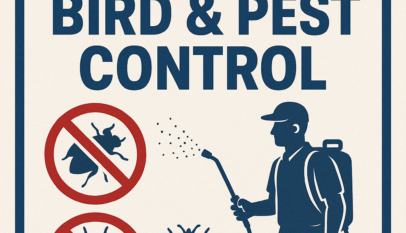Lawn Care Maintenance Companies: Essential Services for a Thriving Yard
Lawn care maintenance companies play a crucial role in transforming outdoor spaces into well-groomed landscapes. These services offer expertise in lawn health, ensuring proper treatments, seasonal clean-ups, and maintenance that busy homeowners may struggle to manage on their own. By hiring professionals, individuals can save time and enjoy healthier, more vibrant lawns.
Many people underestimate the impact that a well-maintained lawn has on their property’s curb appeal and value. Lawn care companies not only handle mowing and fertilizing but also provide services like pest control and landscape design. Understanding what these companies offer can help homeowners make informed decisions about their landscaping needs.
Choosing the right lawn care maintenance company can seem daunting, but knowing what to look for simplifies the process. Companies typically provide tailored plans based on specific lawn conditions and customer preferences. Exploring these options allows homeowners to find the best fit for their lawns and lifestyle.
Understanding Lawn Care Services
Lawn care services encompass a range of activities designed to maintain and improve the health and appearance of a lawn. Knowing the specific needs of a lawn can lead to better care practices and choosing the right maintenance company.
Assessing Your Lawn’s Needs
Determining a lawn’s needs involves evaluating its condition, type of grass, and environmental factors. Issues such as thinning grass, weeds, and pest problems should be identified early.
Key factors to consider include:
- Soil health: Conduct a soil test to check pH levels and nutrient content.
- Grass type: Different grasses require specific care techniques and resources.
- Sunlight and shade: Understanding sunlight exposure can influence watering and fertilization schedules.
Regular assessments can help guide appropriate actions and treatments for optimal lawn health.
Types of Lawn Maintenance
Several types of lawn maintenance services are available to address different needs. These include:
- Mowing: Regular cutting to keep grass at an appropriate height.
- Fertilization: Providing essential nutrients to enhance growth and color.
- Weed control: Targeting unwanted plants to maintain a healthy lawn.
- Aeration: Improving soil structure and reducing compaction.
Each type of service plays a crucial role in the overall health of the lawn, and many companies offer customizable packages based on specific requirements.
Selecting the Right Company
Choosing a lawn care maintenance company requires careful consideration. Factors to evaluate include:
- Experience: Look for companies with a proven track record in lawn maintenance.
- Services offered: Ensure they provide the specific services needed for the lawn type.
- Customer reviews: Reading testimonials can give insight into service quality and customer satisfaction.
Requesting quotes from multiple providers can help compare prices and services, ensuring the best fit for individual needs. Selecting a reputable company can make a significant difference in maintaining a healthy lawn.
Best Practices in Lawn Management
Effective lawn management involves a combination of seasonal care, proper watering and fertilizing techniques, and vigilant weed control. Each aspect plays a crucial role in maintaining a healthy and attractive lawn.
Seasonal Lawn Care Tips
The changing seasons dictate specific care requirements for lawns.
- Spring: Focus on aeration to relieve soil compaction and promote root growth. Apply a balanced fertilizer to encourage healthy blade development.
- Summer: Mow regularly and at a higher setting to protect the grass from heat stress. Increase watering frequency to keep the soil moist.
- Fall: Reseed any bare patches and apply a nitrogen-rich fertilizer to prepare the lawn for winter. Clean up fallen leaves to prevent mold growth.
- Winter: Reduce foot traffic on dormant grass. If necessary, use a snow shovel carefully to avoid damaging the turf.
Watering and Fertilizing Techniques
Establishing a proper watering and fertilizing routine enhances lawn health.
- Watering: Aim for 1 to 1.5 inches of water per week, ideally in the early morning to minimize evaporation. Use a rain gauge to monitor rainfall and adjust watering accordingly.
- Fertilizing: Select a fertilizer that matches the lawn’s specific needs, based on soil testing results. Applying in early spring and again in late summer can support vigorous growth.
- Technique: Use slow-release fertilizers to provide nutrients evenly over time. Avoid over-fertilization as it can harm the grass and the environment.
Weed Control and Prevention
Weeds can hinder lawn quality, so proactive measures are essential.
- Pre-emergent Herbicides: Apply these in early spring to prevent weed seeds from germinating. Timing is critical, as application should coincide with soil temperature reaching the right level.
- Post-emergent Treatments: Target existing weeds using herbicides suitable for the grass type. Spot treat rather than blanket applying, to minimize damage to healthy lawn areas.
- Cultural Practices: Maintain proper mowing height, watering, and soil health to discourage weed establishment. Dense, healthy turf is the best defense against invasive species.
British Virgin Islands Company Registry Explained: Key Facts and Procedures
The British Virgin Islands company registry is a centralized system that maintains detaile…














